Freedom Lesson Plan

Lesson Plan Mindmap for Freedom ” Click to Enlarge
CLICK ICONS TO JUMP DIRECTLY TO EACH SUBJECT ON THIS PAGE








FREEDOM LESSON PLAN
This page is a free-shared lesson plan archive for teaching all educational subjects within the context and theme of “Freedom”. It is purposed for use in community education environments, homeschool environments, traditional schooling environments, or as a supplemental and fun addition to any education program. As part of the complete Education for Life Program, this lesson plan is specifically designed to work in conjunction with the other components: Foundations of Teaching, Curriculum, Teaching Strategies, Learning Tools and Toys, Evaluation Model, and The Ultimate Classroom. If you’d like to learn how all these components work together, click here. Click here for the specifics focused on just using the lesson plans:
CLICK HERE FOR A DETAILED TUTORIAL ON HOW TO USE THIS LESSON PLAN
NOTE: The colors are provided as a possible linear progression (red/easiest to violet/most challenging) for people that might prefer a more linear structure. Our core philosophy, however, is that through creativity every color can be made easy or challenging for any learning level.
RELATED PAGES (mouse-over for descriptions and click for complete pages)
EDUCATION OVERVIEW | HOW TO USE THIS COMPONENT | OUR OPEN SOURCE PURPOSE
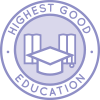
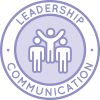
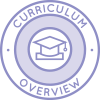
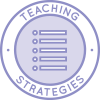
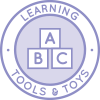
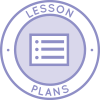
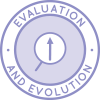
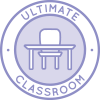
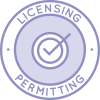

WAYS TO CONTRIBUTE TO EVOLVING THIS EDUCATION PROGRAM WITH US
SUGGESTIONS | CONSULTING | MEMBERSHIP | OTHER OPTIONS
A NOTE ABOUT ALL ONE COMMUNITY LESSON PLANS
The One Community lesson plans are intentionally designed for use in ANY educational environment and with ALL educational, cultural, religious/spiritual, and philosophical approaches to teaching and learning. They are designed without an ideological approach and specifically so they can be adapted to include the views, preferences, methodologies, and/or ideologies preferred by different parents and teachers.
For maximum flexibility and adaptation, they are also designed to be combined to teach multiple subjects at the same time. Doing this increases the creativity, effectiveness, and fun of your learning environment. Once we are on the property and operating our version of the complete school and Education for Life program, we will be adding video examples of how to combine the lessons. In the meantime, visit the Teaching Strategies page for a list of suggestions.
ARTS AND TRADES
CLICK HERE FOR THE COMPLETE SUBJECT OUTLINE FOR ARTS & TRADES
 | TEACHING ARTS AND TRADES WITHIN THE CONTEXT OF FREEDOM |

| The Arts- Draw or act out* something that symbolizes freedom to you.
- Sing a song* about freedom using lyrics that you either make up or lyrics from an existing song of your choice.
- Create and label* a collage of 30 different items that you feel represents freedom.
- Act out a scene* from any plan or book of your choice that represents someone that you feel is displaying freedom or coming into freedom.
- Create a series of 3 paintings or sculptures* that symbolize coming into or discovering freedom.
- Create a 10-piece series* to display the results of the trials/tribulations that artists went through in relation to the expansion or repression of artistic freedom we see today.
- Create an artistic showcase* that teaches the meaning of artistic freedom and have it opened to the public.
|

| Trades- Talk with a mentor* about what you feel would make a trade feel free or not free to you.
- Pick your favorite trade. Come up with 5-10 reasons why you feel it feels freeing to do that trade. Get into a group with 2-4 others that have done the same and share your work*. As a group, decide which of the trades in the group is the “most free” and why.
- Pick 5 trades and for each write 10 reasons why* you feel that trade would feel freeing.
- Pick a trade and interview 5 people in that field and ask them each 20 Questions related to freedom within their trade and whether they feel free and why. Create a report* analyzing the results and identify which aspects of the field are freeing and/or limiting.
- Choose a trade that had a history of not being free to practice that is free to practice (at least in some aspects) today and create a presentation* to teach others how this trade experienced and overcame the adversities in order to become freely practiced. Include any opportunities that exist for it to become even more free and suggestions on how that might occur.
- Pick one country and research it’s history about trades. Choose 5 trades that you feel most contributed to allowing and creating freedom over the course of history in that country. Create a multimedia presentation* showcasing the freedom-enhancing history of the trades that you chose.
- Perform an in-depth analysis of the trade you feel would make the largest possible impact if it became more “free.” Write a report* on the factors that you see are currently limiting this trade and solutions for these issues. If possible, choose a world-wide (global) company and present your findings to them with the intention of getting your solutions implemented.
|
| CLICK HERE TO EMAIL US IF YOU HAVE AN IDEA TO ADD TO THIS SECTION |
* Please note that anything with an asterisk is just a suggestion. The diversity of options with asterisks are interchangeable and purposed to stimulate your own ideas. Any one of these suggestions could be replaced with a written paper, any form of art project (drawing, painting, music, paper mache, clay, wood, knitting/embroidery, metals, etc. etc.), an experiment, a presentation, a mindmap, a computer program, a web design project, a piece of poetry or a song, an interpretive dance or play, a group project, or anything else. What we feel is most important is that both the Learner and the Teacher agree on an exercise/activity they both feel would be maximally engaging, fun, and effective. If you come up with an idea we haven’t already thought of, please share it with us.
ENGLISH
CLICK HERE FOR THE COMPLETE SUBJECT OUTLINE FOR ENGLISH
Note: Any language can be substituted for English. The subject is listed here as “English” because that is the primary language of most of the people on the team, and the official language of the country we’re building our initial location in.
 | TEACHING ENGLISH WITHIN THE CONTEXT OF FREEDOM |
 | - Share 20 words* that represent or feel like freedom to you.
- Tell a story* (made up or real) about a time that you felt freedom.
- Read 3 short stories with the theme of freedom and write a short report* about which one you felt the most freedom while reading it and why.
- Write a short story or play* with the theme of ‘a journey towards freedom.’
- Write and present a speech* arguing either for or against increasing “freedoms.”
- Research a country or category in which literature has been repressed and write an analysis* on the pros and cons that this repression generated on this society. Include an analysis on why you believe this repression took place, and, if the repression was lifted, how and why this occurred.
- Choose 2 to 3 cultures and do a comparative analysis* of the types of literature that either represent freedom within the culture or the types of literature that are ‘banned’ or ‘taboo’ within the culture.
- Choose a repressed type of literature that you believe that if more people had access to it it would enhance/benefit humanity in some way. Create and implement a strategy* for how to make this literature more accessible with the goal of open-source / free-sharing it.
- Write a fiction/non-fiction novel* about any aspect of freedom of your choice.
|
| CLICK HERE TO EMAIL US IF YOU HAVE AN IDEA TO ADD TO THIS SECTION |
* Please note that anything with an asterisk is just a suggestion. The diversity of options with asterisks are interchangeable and purposed to stimulate your own ideas. Any one of these suggestions could be replaced with a written paper, any form of art project (drawing, painting, music, paper mache, clay, wood, knitting/embroidery, metals, etc. etc.), an experiment, a presentation, a mindmap, a computer program, a web design project, a piece of poetry or a song, an interpretive dance or play, a group project, or anything else. What we feel is most important is that both the Learner and the Teacher agree on an exercise/activity they both feel would be maximally engaging, fun, and effective. If you come up with an idea we haven’t already thought of, please share it with us.
HEALTH
CLICK HERE FOR THE COMPLETE SUBJECT OUTLINE FOR HEALTH
 | TEACHING HEALTH WITHIN THE CONTEXT OF FREEDOM |

| - Find pictures and make a collage* of one healthy and one unhealthy way to express freedom that relates to each of the 4 types of health (emotional, physical, mental, and social).
- At this point in your life, you likely have parents/guardians that either make decisions for you or teach you how to make decisions that benefit your more. Talk* about whether this feels like freedom or lack of freedom to you and whether it benefits or hinders your health.
- For one day (with the permissions of your parent(s) and/or guardian(s) ) you are “free” to make your own decisions about your physical health. Before that day, plan ahead on what you will / will not be doing and what you will be eating / not eating for that day. Then, live that day as you planned it and create a report* about the results of how those activities / foods affected your mental / physical / emotional / social health. Present your findings to your parent(s) and/or guardian(s).
- Explore different types of “exercises” that create a feeling of freedom to you. Create a new exercise* that enhances your experience/feeling of freedom even more and teach it to a small group of others.
- Do an analysis* on different types of diets and/or different types of exercise programs that you feel work in harmony with the desire for freedom. Create a list* of the top 5 programs that you feel most work in harmony with the desire for freedom. Include a complete analysis on the reasons why these 5 most promote freedom and a short analysis on the 5 you found to be the most infringing on freedom and why you felt this way. If possible, include any statistics on the likelihood of people to succeed/accomplish (versus quit) their desired results on your top/bottom 5 picks.
- Create a new form of diet and exercise regime that is designed to work with and benefit from the desire for freedom and positively impacts all forms of health. Implement this in your own life for at least a week and, based on your results, make any updates you find necessary to the regime. Open-source / free-share your program in a public forum* (website, Youtube, internet forum, magazine, etc.).
- Various aspects of health have been repressed across time in many different cultures. Choose 1 aspect that is still repressed today and create and implement a solution* for how to make that aspect more free, doing any necessary research on past instances of repressed health aspects that may be necessary.
|
| CLICK HERE TO EMAIL US IF YOU HAVE AN IDEA TO ADD TO THIS SECTION |
* Please note that anything with an asterisk is just a suggestion. The diversity of options with asterisks are interchangeable and purposed to stimulate your own ideas. Any one of these suggestions could be replaced with a written paper, any form of art project (drawing, painting, music, paper mache, clay, wood, knitting/embroidery, metals, etc. etc.), an experiment, a presentation, a mindmap, a computer program, a web design project, a piece of poetry or a song, an interpretive dance or play, a group project, or anything else. What we feel is most important is that both the Learner and the Teacher agree on an exercise/activity they both feel would be maximally engaging, fun, and effective. If you come up with an idea we haven’t already thought of, please share it with us.
MATH
CLICK HERE FOR THE COMPLETE SUBJECT OUTLINE FOR MATH
 | TEACHING MATH WITHIN THE CONTEXT OF FREEDOM |

| - Count all of the ways you notice experiencing freedom and what you feel is a lack of freedom throughout one whole day and keep track of this on a piece of paper using symbols or lines*.
- In 3 to5 sentences* explain why you feel learning maths could add to your personal freedom.
- Choose a phrase/message of at least 10 words or 10 words that represent freedom to you and create a code* where each letter of the alphabet represents a number. Write your words/phrase in your code* and give it to someone else to solve, making sure to give them the code that includes a pattern for the solution.
- Do an introductory level study of all of the green level maths and write a short paper* about the one you feel could potentially increase individual or humanities experience of freedom the most and include why you feel this way and why you chose it over the other fields.
- Create an equation* that generates a 3D representation of a symbol of your choice that represents freedom to you.
- Write an in-depth research paper* about how access to a specific type of maths created more freedom for a particular culture/society of your choice.
- Write a high school curriculum* on why/how a particular field of math could increase freedom and include strategies to teach/spread that form of maths to the people you feel need it the most.
|
| CLICK HERE TO EMAIL US IF YOU HAVE AN IDEA TO ADD TO THIS SECTION |
* Please note that anything with an asterisk is just a suggestion. The diversity of options with asterisks are interchangeable and purposed to stimulate your own ideas. Any one of these suggestions could be replaced with a written paper, any form of art project (drawing, painting, music, paper mache, clay, wood, knitting/embroidery, metals, etc. etc.), an experiment, a presentation, a mindmap, a computer program, a web design project, a piece of poetry or a song, an interpretive dance or play, a group project, or anything else. What we feel is most important is that both the Learner and the Teacher agree on an exercise/activity they both feel would be maximally engaging, fun, and effective. If you come up with an idea we haven’t already thought of, please share it with us.
SCIENCE
CLICK HERE FOR THE COMPLETE SUBJECT OUTLINE FOR SCIENCE
 | TEACHING SCIENCE WITHIN THE CONTEXT OF FREEDOM |

| Life Sciences- In a picture* name one animal and one plant that most represents freedom to you and explain why.
- With at least 3 other people talk* about what classification of animal you believe experienced the most freedom in it’s lifetime and why focusing on the unique features of that classification promotes freedom over the other classifications (choosing from birds, fish, amphibians, mammals, reptiles, etc.).
- Study and in a 1 page essay* discuss how humans have impacted the freedom of 2 species of your choice, one focused on “positive” impacts and one focused on “negative” impacts, from that species’ perspective and create a presentation.
- Choose 10 areas of microbiology that represent ‘freedom’ to you and write a story* that personifies them interacting to perform an act of freedom.
- Create a presentation* of your body experiencing an action of something that you experience as a feeling of freedom, focusing on the perspectives and interactions of 3-20 (depending on level of depth/complexity of each) of your internal bodily functions (body chemistry) and systems (organs, etc.).
- Create an entertaining and visually appealing storyboard* including 40+ images of 40+ facts about freeing energy and nutrients from food for bodily production.
- Choose a species that is currently (or was) ‘threatened’ and write an inspirational story* of that species ‘freeing’ itself through propagation and other methods of your choice. Share your story in a public format that you feel would be helpful to support that species.
|

| Physical Sciences- Create a picture* that shows freedom through motion.
- Find at least 3 examples of how electricity provides freedom to humans and share your findings with 3 others*.
- Write a short story* personifying gravity as an oppressor and show how laws of physics help to ‘free’ things from gravity.
- Create a detailed report* about how 3 devices that were created using the properties of physical sciences (chemistry and/or physics) enhance human freedom and explain how each does that, in your opinion.
- Choose a blue level physical science bullet and design something* that could increase freedom for a group of people that you identify as in need of the service that new item provides.
- Think of a complex situation where someone is ‘trapped’ and create solutions* for them to attain their freedom in ways that teach 20+ aspects of physical sciences. Share your ideas in a blog*.
- Write an open source curriculum for young learners* about how optical physics frees light, including graphics, activities, and details to make it interesting to the learners.
|

| Earth Sciences- Use dance to tell a story* of the movement of tectonic plate, with the theme of freedom.
- Explore and list* 3 basic earth science related concepts that you easily can access in your neighborhood by investigating in books and/or online. Then go outside and explore these same 3 concepts in real life.
- Write a 3 to 5 page paper* on how the freedom of a particular human behavior of your choice has impacted the earth and then how (if at all) the earth affects human behavior differently because of that, now or in the future.
- Create a visual display* about the impact that you feel space exploration has on our freedom on earth.
- Study 3 binary or trinary star systems of your choice. Write a report* about how the ‘freedom’ of movement of celestial bodies impact each other. Include a hypothesis on one of the systems about what would happen to the movement of the other bodies if one of the stars were removed.
- Write a freedom themed story* about the ‘evolution’/growth of galaxies from the perspective of 10+ types of celestial bodies.
- From the perspective of a scientist in the field, choose the violet level earth science field that you feel has the most amount of freedom and a field that has the least amount of freedom, and create an open source manual* comparing and contrasting those fields of study from the perspective of what makes them more or less free in today’s society, including 10+ specific examples. Also include a section on what you feel could be implemented to make the less ‘free’ science become more ‘free’.
- Choose a violet level field of earth sciences and explore in detail how it’s historical arch has increased or decreased societal freedom. Use what you learned to write an open source tutorial* including 20 specific examples. Also include how to apply what you learned to a different field within earth science that you feel could improve societal freedom.
|
| CLICK HERE TO EMAIL US IF YOU HAVE AN IDEA TO ADD TO THIS SECTION |
* Please note that anything with an asterisk is just a suggestion. The diversity of options with asterisks are interchangeable and purposed to stimulate your own ideas. Any one of these suggestions could be replaced with a written paper, any form of art project (drawing, painting, music, paper mache, clay, wood, knitting/embroidery, metals, etc. etc.), an experiment, a presentation, a mindmap, a computer program, a web design project, a piece of poetry or a song, an interpretive dance or play, a group project, or anything else. What we feel is most important is that both the Learner and the Teacher agree on an exercise/activity they both feel would be maximally engaging, fun, and effective. If you come up with an idea we haven’t already thought of, please share it with us.
SOCIAL SCIENCES
CLICK HERE FOR THE COMPLETE SUBJECT OUTLINE FOR SOCIAL SCIENCES
 | TEACHING SOCIAL SCIENCES WITHIN THE CONTEXT OF FREEDOM |

| - Create a picture* of ways that you experience freedom and/or lack of freedom in your various social settings.
- Explore the signs, songs, and symbols of freedom in your culture. Pick your favorite one and recreate it*. (ex: make a paper flag, sign a song, etc.)
- Explore what freedom means in your country and what holiday is associated with it and why. Learn about how your country gained its freedom (if applicable) and what ways any other culture affected it or were affected by it receiving its freedom. Create a short informative presentation* to share your findings with other in your age group.
- Explore the psychological effects that a perceived having/lacking of freedom has on individual behavior through reading at least 3 different perspectives. Create a report* on your findings.
- Research on how your country or culture has affected another country/cultures’ freedom from a sociological perspective. Create a 5 page minimum paper* with footnotes and examples (at least 25).
- Choose a country or culture that appears to you to have the greatest need for an increase in freedom today and compare it to other cultures/countries that have had major sociopolitical change when faced with a similar lack of freedom. Create a written hypothesis for what you feel may occur in the country / culture you chose if the “repressed party” did receive more freedom and/or come up with a win/win solution that would appease the repressed and the oppressor (potentially)*.
- Create and implement a solution* that you feel would most positively increase worldwide freedom and include the sociological/psychological benefits/reasons why you feel this solution would be beneficial and why it would work.
|

| Foreign Languages (Each of the following is to be completed in the foreign language(s) being studied) - Learn words for different freedom related concepts.
- Read and write with words for freedom related concepts.
- Explore ‘freedom’ in fiction.
- Explore and create different types of literature in relation to freedom.
- Compose a new piece of literature about freedom.
- Explore the complete history of and writings about freedom words.
- Write a dissertation level paper on freedom.
|
| CLICK HERE TO EMAIL US IF YOU HAVE AN IDEA TO ADD TO THIS SECTION |
* Please note that anything with an asterisk is just a suggestion. The diversity of options with asterisks are interchangeable and purposed to stimulate your own ideas. Any one of these suggestions could be replaced with a written paper, any form of art project (drawing, painting, music, paper mache, clay, wood, knitting/embroidery, metals, etc. etc.), an experiment, a presentation, a mindmap, a computer program, a web design project, a piece of poetry or a song, an interpretive dance or play, a group project, or anything else. What we feel is most important is that both the Learner and the Teacher agree on an exercise/activity they both feel would be maximally engaging, fun, and effective. If you come up with an idea we haven’t already thought of, please share it with us.
TECHNOLOGY AND INNOVATION
CLICK HERE FOR THE COMPLETE SUBJECT OUTLINE FOR TECHNOLOGY AND INNOVATION
 | TEACHING TECHNOLOGY & INNOVATION WITHIN THE CONTEXT OF FREEDOM |

| Technology- Think of 3 technologies that have increased / decreased your feeling of freedom and explain* why you feel this way to at least 2 other people.
- Pick 3 of your favorite simple machines and give an example for each of them ‘freeing’ something. (ex- a rock being ‘freed’ from the ground by a lever)
- Use your favorite form of technology in a fun way that shows/explains how that technology increases your freedom*.
- Name 3 simple machines that you use that increase your freedom and explain how they do that.
- Create a short multimedia presentation* on the subject of why you feel social media increases/decreases personal freedom and include a list of which social media you feel increases freedom the most / decreases freedom the most (both, if you feel it applies).
- Create an app* that enhances the feeling of personal freedom (can be a game, tool, etc.).
- Choose one country / culture that has a very “advanced” level of technology and one that does not. In a videotaped presentation*, compare and contrast how each cultures’ levels of technology affects their perceived freedom. As much as possible, include the perspective of individuals within and outside that country/culture.
- Create a combination of technologies* that increase personal/individual freedom.
- Create a new technology* that increases freedom for a large group of people.
|

| Innovation- Talk* about how using your imagination increases or decreases your feeling of freedom.
- Think of a creative way to teach others what freedom means to you and then implement it. Afterwards, examine how that teaching method made you feel and ask the learners about their experience*.
- Consider which types of learning make you feel the most/least free and why. Teach others* about your favorite aspect of freedom using the method you find most freeing and teach them about why you chose that method and why you feel it’s the most ‘free’ feeling.
- Choose 3 people that you feel are the greatest innovators and research their impacts from the aspect of how free or not free they were in the times of their creations and how this affected their innovations. Create an interesting way to present your findings to others*.
- Do an in-depth analysis on the person you consider to be the greatest innovator that had the least amount of freedom and write a thorough report* on this topic including how you feel the lack of freedom affected their ability to produce or provide tangible products/affects for humanity.
- Design a new combination of teaching/learning components* that you feel maximizes the learners freedom. Test it and make improvements as necessary. Free share your new system.
- Pick either a country that currently is experiencing what you would consider a “lack of freedom” in its education system. Design and implement a strategy* in a way you feel would benefit its people.
|
| CLICK HERE TO EMAIL US IF YOU HAVE AN IDEA TO ADD TO THIS SECTION |
* Please note that anything with an asterisk is just a suggestion. The diversity of options with asterisks are interchangeable and purposed to stimulate your own ideas. Any one of these suggestions could be replaced with a written paper, any form of art project (drawing, painting, music, paper mache, clay, wood, knitting/embroidery, metals, etc. etc.), an experiment, a presentation, a mindmap, a computer program, a web design project, a piece of poetry or a song, an interpretive dance or play, a group project, or anything else. What we feel is most important is that both the Learner and the Teacher agree on an exercise/activity they both feel would be maximally engaging, fun, and effective. If you come up with an idea we haven’t already thought of, please share it with us.
VALUES
CLICK HERE FOR THE COMPLETE SUBJECT OUTLINE FOR VALUES
 | TEACHING VALUES WITHIN THE CONTEXT OF FREEDOM |

| - Create a picture* about freedom as a value and why you feel it is/isn’t important and/or valuable to you.
- Make a collage of pictures* that show what it would be like for you to experience more or less freedom in your life and in what ways each would be possible.
- Interview 10 people about which 5 values they feel integrate freedom the most. Create a visual representation* of the responses that you feel symbolizes freedom.
- Study the values of 3 organizations/communities/social entities that you feel or have heard have a high degree of freedom or feeling of freedom, and 3 that do not. Devise and execute a method* to teach others what you learned, including your conclusions on at least 5 general elements/ways to make environments feel more free, and 2+ suggestions that could be to applied to an environment you are part of.
- Study the values of 2+ societies/cultures that you feel or have heard have a high degree of freedom or feeling of freedom, and 2+ that do not. Create a visual display* that includes your conclusions on at least 5 general elements/ways to make environments feel more free, and 2+ suggestions that could be to applied to an environment you are part of.
- Do an in depth study on why people value freedom, and various ways that populations have experience freedom ‘being removed’ and ‘taking freedom back’ and create a multimedia presentation* to show what you learned in a way that helps people feel connected to the value of freedom while expanding their meaning of it.
- Create a lesson plan* for a group of high school aged persons that will help them explore and engage with what freedom means to people across the world, and to explore and expand what it means to themselves.
- Create an open source resource* that helps to showcase the different types and levels of freedom that at least 10 different groups are experiencing across the planet today, and the impacts increasing and decreasing the freedom and or perception of freedom of each would have on that group and on the rest of the world.
|
| CLICK HERE TO EMAIL US IF YOU HAVE AN IDEA TO ADD TO THIS SECTION |
* Please note that anything with an asterisk is just a suggestion. The diversity of options with asterisks are interchangeable and purposed to stimulate your own ideas. Any one of these suggestions could be replaced with a written paper, any form of art project (drawing, painting, music, paper mache, clay, wood, knitting/embroidery, metals, etc. etc.), an experiment, a presentation, a mindmap, a computer program, a web design project, a piece of poetry or a song, an interpretive dance or play, a group project, or anything else. What we feel is most important is that both the Learner and the Teacher agree on an exercise/activity they both feel would be maximally engaging, fun, and effective. If you come up with an idea we haven’t already thought of, please share it with us.

OTHER RESOURCES
We're building a resource section. Click here if you have a suggestion or resource for this page.
OPEN SOURCE SUBJECT RESOURCES (click icons for complete pages)



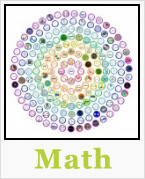



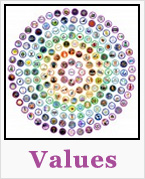
OPEN SOURCE CURRICULUM OUTLINES (click image for summaries and links to complete pages)
CARE
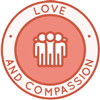
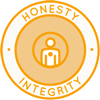
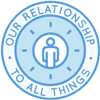
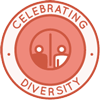
SHARE
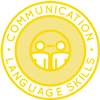
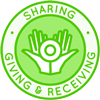

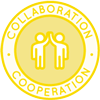
PLAY
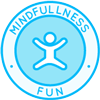
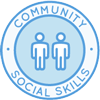
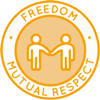
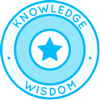
OPEN SOURCE TEACHING METHODOLOGY SUMMARIES
Montessori | Waldorf | Orff | Reggio | Multi-Intelligence | Bloom's Taxonomy | Study Tech | I-WE
INDEX OF ALL THE ONE COMMUNITY OPEN SOURCE LESSON PLANS

Click this image for the Lesson Plans for Life page with links to the rest of the lesson plans
THE WORLD'S LARGEST ONLINE FREE EDUCATION RESOURCE ARCHIVE
RELATED CONTENT AND OTHER RELATED RESOURCES
We're building this resource section. Click here if you have a suggestion or resource for this page.


























 One Community
One Community









